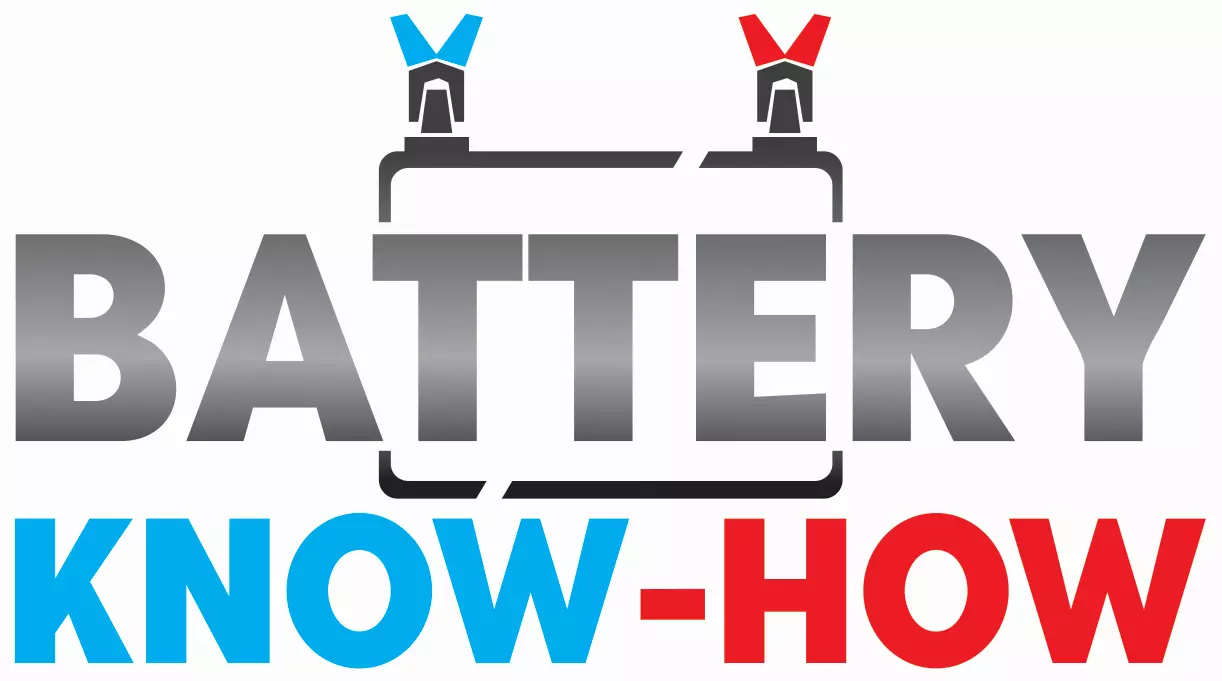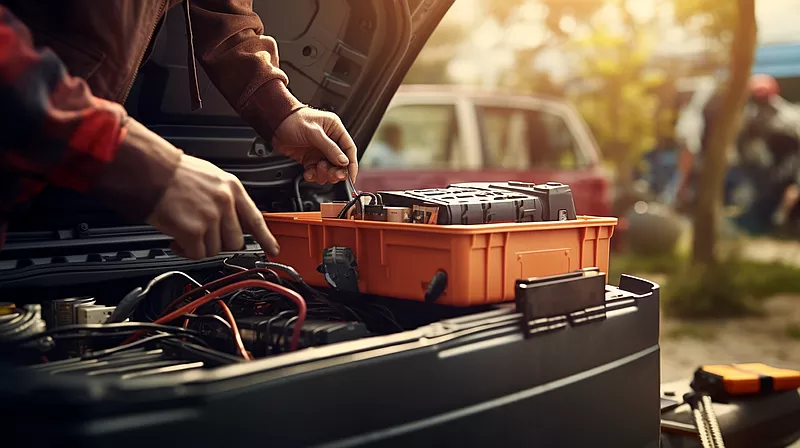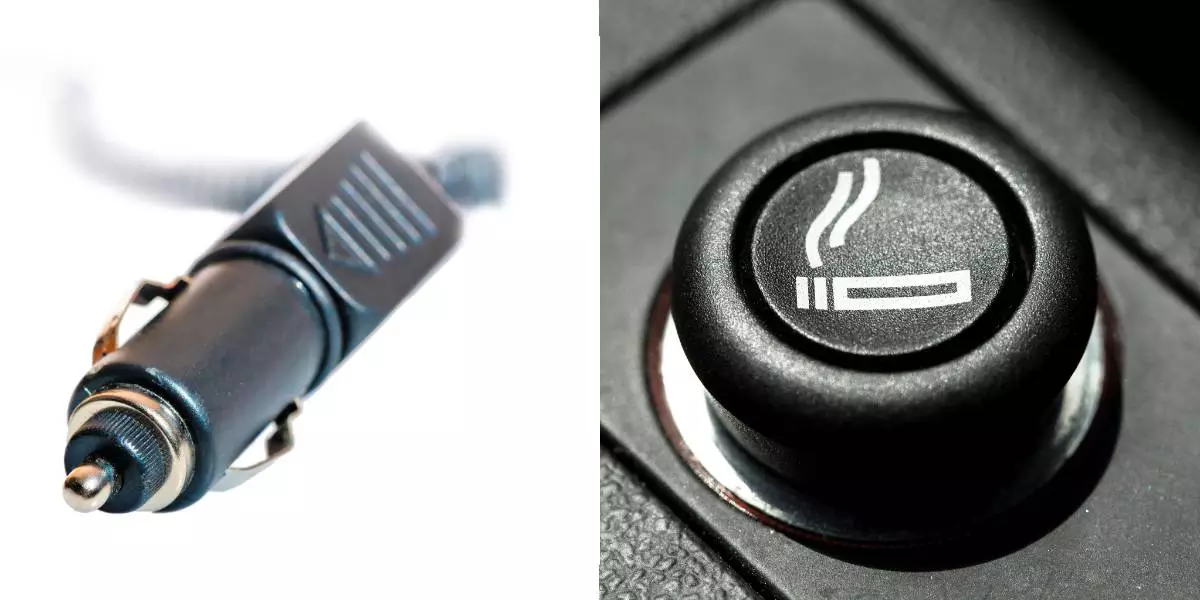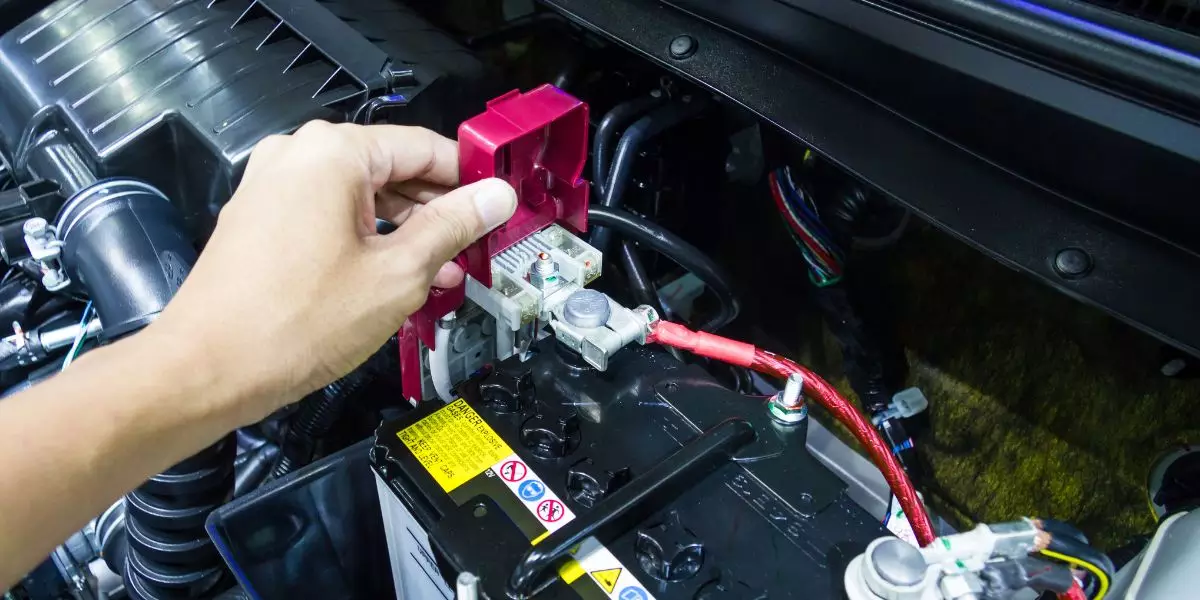Do you find yourself stranded with a dead car battery? Don’t fret! With the right tools and knowledge, you can charge your car battery outside the vehicle using jumper cables.
Picture this: You’re out on a serene country road, surrounded by nature’s beauty, when suddenly your engine sputters to a halt. The frustration builds as you realize that your car battery has given up on you. But fear not! By following our step-by-step guide and taking necessary safety precautions, you can bring that lifeless battery back to its former glory without the need for expensive towing services or professional help.
In this article, we will explore everything from understanding the basics of car batteries to troubleshooting common issues that may arise during the jump-starting process. So grab your jumper cables and get ready to revive your vehicle’s heart outside the confines of its metal shell!
Key Takeaways
- Dead car batteries can be charged outside the vehicle using jumper cables.
- Regular car battery maintenance is crucial for longevity and functionality.
- Safety precautions should be taken when jump-starting a car battery.
- Proper disposal and recycling of car batteries are essential to minimize environmental pollution.
Understanding the Basics of Car Batteries
Car batteries are like tiny powerhouses, storing enough energy to jump-start an entire car with just a flick of a switch. Proper car battery maintenance is crucial for ensuring its longevity and functionality.
Regularly inspecting the battery’s terminals for corrosion and cleaning them can help extend its lifespan. Additionally, keeping the battery charged by driving your car regularly or using a trickle charger can prevent it from dying prematurely.
Knowing the signs of a dying battery is essential. If you notice that your headlights are dimming, there is difficulty starting your car, or you hear clicking sounds when turning the key in the ignition, it may be time to replace your battery. However, in some cases, reconditioning the battery might be possible by using specialized chargers or additives.
While jumper cables are commonly used to jump-start a dead car battery using another vehicle’s power supply, there are alternative methods available as well. Portable jump starters and battery boosters provide convenience and can be used without needing another vehicle nearby.
Understanding these basics about car batteries sets the foundation for knowing how jumper cables function and their role in charging a car battery outside of the vehicle.
Knowing the Function of Jumper Cables
Using a set of cables, you can connect two electrical systems to transfer power and restore functionality. Jumper cables are commonly used to jump start a car battery when it loses its charge. However, there are some alternatives to jumper cables that can also be used in emergency situations, such as portable jump starters and battery chargers specifically designed for car batteries.
Jump starting a car battery using jumper cables comes with certain risks. If it’s not done properly, it can cause damage to the vehicle’s electrical system or even result in an explosion. It’s important to follow the correct procedures and ensure that both vehicles involved are turned off before connecting the cables.
While jump starting may seem like a convenient solution, there are benefits to utilizing professional battery charging services as well. These services use specialized equipment and techniques to safely charge the battery without causing any harm.
Cold weather can have a significant impact on car battery performance. In low temperatures, the chemical reactions within the battery slow down, reducing its ability to provide sufficient power. It’s advisable to keep the battery warm during winter months or consider investing in a cold-weather-specific battery charger.
In addition to traditional jumper cables, there are different types of car battery chargers available in the market today, including trickle chargers, fast chargers, and smart chargers with various features aimed at providing efficient charging solutions.
Knowing about these jumper cable alternatives, risks of jump starting a car battery, benefits of professional charging services, impact of cold weather on performance, and different types of car battery chargers will help you make informed decisions when it comes to maintaining your vehicle’s electrical system.
Now let’s transition into gathering the necessary tools and equipment for charging your car battery outside the vehicle without writing ‘step’.
Gathering the Necessary Tools and Equipment
To successfully gather the essential tools and equipment needed, you’ll want to bring a whole arsenal of gear that could rival Batman’s utility belt! When it comes to charging a car battery outside the car with jumper cables, there are alternative methods available.
Portable battery chargers are a convenient option as they can be easily carried and used anywhere. These chargers come in various sizes and power levels, allowing you to choose one that suits your needs.
Another option is using a battery tender, which is designed specifically for maintaining and charging batteries. It provides a slow and steady charge, extending the life of your battery.
If you’re looking for an environmentally friendly solution, solar-powered battery chargers are worth considering. They harness the power of the sun to charge your car battery, making them ideal for outdoor use or during emergencies.
Additionally, some people opt for DIY battery charging stations where they build their own setup using different components like solar panels or generators.
Now that you have gathered all the necessary tools and equipment for charging a car battery outside the vehicle, let’s move on to discussing safety precautions for jump-starting a car battery without any hassle.
Safety Precautions for Jump-Starting a Car Battery
Stay safe and avoid any mishaps by following these important precautions when jump-starting a car battery.
To prevent accidents, make sure you have the proper safety gear. Wear gloves and safety glasses to protect yourself from any potential risks. It’s also essential to check for battery damage before attempting to jump-start it. Look for signs of corrosion, leaks, or cracks in the casing, as a damaged battery can be dangerous to work with.
Avoid sparks by connecting the jumper cables in the correct order. Start by connecting the positive (+) cable to the positive terminal of the dead battery, then connect the other end of the positive cable to the positive terminal of the charged battery. Next, attach one end of the negative (-) cable to the negative terminal of the charged battery and finally, attach the remaining end of the negative cable to an unpainted metal surface on your car’s engine block.
Choose a suitable charging location that’s well-ventilated and away from flammable materials. This’ll help minimize any potential risks.
Now that you’re aware of these safety precautions, let’s move on to a step-by-step guide on jump-starting a car battery outside the car.
Step-by-Step Guide on Jump-Starting a Car Battery Outside the Car
Start by carefully inspecting the surrounding area, making sure it’s clear of any potential hazards or obstacles. Once you’ve ensured your safety, you can proceed with the jump-starting process.
Begin by connecting the jumper cables to the positive and negative terminals of both batteries. Remember to connect the positive cable first and then the negative cable. Make sure the connections are secure before moving on.
Next, let the car battery charge for a few minutes by running the engine of the donor vehicle. The charging time will vary depending on how depleted your battery is. After some time has passed, it’s important to test the voltage of your car battery using a voltmeter. This will help determine if it’s been successfully charged.
Once you’ve confirmed that your battery is charged, you can proceed with the reinstallation steps in reverse order. Disconnect the jumper cables in reverse sequence – negative cable first, followed by the positive cable – ensuring they don’t touch each other or any metal surfaces.
Now that you know how to jump-start a car battery outside of the car, let’s move on to troubleshooting common issues during this process without skipping a beat.
Troubleshooting Common Issues
If you find yourself facing any hiccups during the jump-starting process, don’t worry! It’s like encountering a pesky roadblock on your journey to get back on the open road.
Luckily, there are troubleshooting techniques you can try to overcome common battery problems. First, check if the jumper cables are securely connected to both batteries and ensure that they’re not damaged or corroded. If the car still doesn’t start, you may need to let the dead battery charge for a longer period of time before attempting again.
Another DIY solution is to clean the battery terminals with a mixture of baking soda and water to remove any corrosion that may be affecting the connection. If all else fails, it might be time to seek professional help from a mechanic or roadside assistance service.
To prevent future issues, it’s important to follow some battery maintenance tips. Regularly inspect your battery for signs of damage such as cracks or leaks and replace it if necessary. Keep your battery clean and free from dirt and corrosion by wiping it down regularly. Additionally, avoid leaving electronic devices plugged in while your car is off, as this can drain your battery over time.
Now that you know how to troubleshoot common issues with jump-starting a car outside of its body, let’s move on to discussing proper disposal of old or damaged batteries without harming the environment or others around you.
Proper Disposal of Old or Damaged Batteries
When it’s time to say goodbye to your old or damaged battery, make sure you dispose of it properly to protect the environment and those around you. Improper disposal of batteries can have a negative impact on the environment due to their hazardous materials. To help you understand the different methods of battery disposal and their environmental impact, refer to the table below:
| Disposal Method | Environmental Impact |
|---|---|
| Recycling | Minimizes pollution |
| Reuse | Reduces waste |
| Landfill | Contaminates soil |
| Incineration | Releases toxins |
To ensure that you comply with battery disposal regulations, check with local recycling centers or automotive shops for proper recycling options. Many places offer drop-off locations specifically for batteries. Recycling batteries not only reduces waste but also allows valuable materials like lead and acid to be reused.
Now that you know how to properly dispose of your old or damaged battery, let’s move on to preventive measures that will help maintain a healthy car battery.
Preventive Measures to Maintain a Healthy Car Battery
Maintaining a healthy car battery requires regular inspection and care to ensure its longevity and reliability. To keep your car battery in good condition, it’s essential to follow preventive measures.
One popular method for charging your car battery is using jumper cables to charge the battery outside of the car. This allows you to directly connect the positive and negative terminals of the dead battery with a fully charged one from another vehicle. It’s important to follow the correct procedure when using jumper cables to avoid any damage or injury.
Regularly maintaining your car’s battery is crucial for its lifespan. This includes checking for any signs of corrosion on the terminals and cleaning them if necessary. Additionally, it’s recommended to inspect the battery case for any cracks or leaks that could affect its performance.
Proper storage of your car battery is also vital in maintaining its health. When storing a disconnected battery, make sure it is kept in a cool and dry place where it won’t be exposed to extreme temperatures or moisture.
Lastly, periodically testing your car battery can help identify any potential issues before they become major problems. You can use a multimeter or take your vehicle to an auto shop for professional testing.
By following these preventive measures – utilizing proper charging methods, conducting regular maintenance checks, storing the battery correctly, and testing it periodically – you can prolong the life of your car’s battery and ensure reliable performance when you need it most.
Conclusion
So now you know that it’s possible to charge a car battery outside the car using jumper cables. By understanding the basics of car batteries and following the proper steps, you can easily jump-start your battery and get back on the road.
But remember, safety should always be your top priority. So, are you ready to take on the challenge and become a pro at jump-starting car batteries? Don’t let a dead battery ruin your day!
Frequently Asked Questions
How long does it usually take to charge a car battery outside the car with jumper cables?
The charging time for a car battery outside the car with jumper cables varies depending on factors like battery capacity and charger output. Best practices include ensuring proper connection and avoiding overcharging. Using a battery charger is generally faster than using jumper cables.
Can you use any type of jumper cables to charge a car battery outside the car?
Using the wrong jumper cables to charge a car battery outside the car can be like trying to fit a square peg in a round hole. Consider alternatives, take precautions, and avoid common mistakes for safe and effective charging.
Is it safe to leave a car battery unattended while charging it outside the car?
When charging a car battery outside the car, it is important to take safety precautions. Use necessary equipment like jumper cables and avoid common mistakes. This method has benefits and helps maintain the battery’s health.
Will jump-starting a car battery outside the car cause any damage to the vehicle’s electrical system?
Jump-starting a car battery outside the car can potentially damage the electrical system. Alternatives include using a battery charger or seeking professional assistance. Precautions to take include checking for signs of damage and ensuring proper connections.
Are there any specific weather conditions that could affect jump-starting a car battery outside the car?
Extreme temperatures can have a major impact on jump-starting a car battery outside. Proper grounding is crucial to avoid electrical damage. Safely jump-start in the rain by using rubber mats. Protect the battery from snow with insulated gloves. Shield it from heat by keeping it cool.




